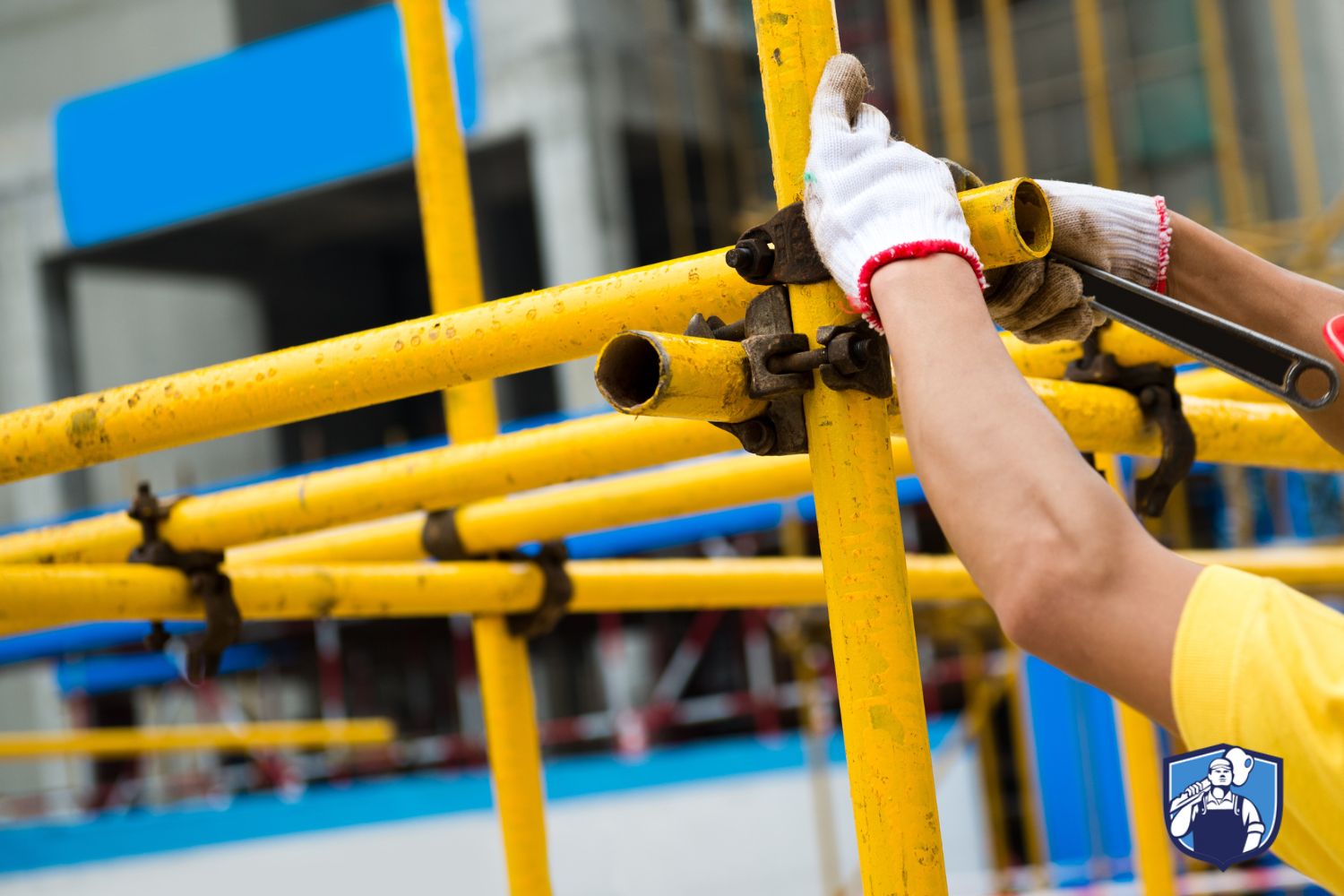Your Complete Guide to the Legal Requirements for Scaffolding in the UK
You already regret it, don’t you?
You thought bringing up the topic of your next big project with the lads down the pub would be a good idea, but now you find yourself mediating a serious debate, contested with more intensity and stubbornness than your average episode of Question Time.
The topic of such a fierce debate?
Scaffolding.
One mate says it’s required by law. Try to get away with just a couple of ladders, and you’ll have the health and safety police slapping you with a big fine before you know it.
Another argues that whilst it may not be essential, it’s still pretty important, though you should be able to get away with knocking something together yourself rather than spending the money on working with a professional scaffolding company.
If you’re ready to finally settle that debate once and for all, this is the guide for you.
Here, I’ve asked my scaffolding expert from England to explain what the UK law actually says about the use of scaffolding, whether or not you actually need it, and, if you do, how to ensure that it is erected safely.
1. Evaluating Risks
We all have that one mate who swears he knows a guy who knows another guy who got fined for replacing a single roof tile without first erecting half a tonne of scaffolding, but look:
It’s seriously unlikely that such a story ever actually happened.
The truth is that the law doesn’t outright ban the use of ladders for smaller projects, nor does it demand the use of scaffolding for every building maintenance project you could ever imagine.
Rather, current legislation makes it your responsibility to assess the risk of any given project and determine whether or not scaffolding is the best option for keeping you and your staff safe on site.
That’s what all of this ultimately boils down to:
Safety.
Of course, the safest way to work is to keep both feet firmly on the ground, but where that’s not possible, a little common sense is required.
If you’re spending an hour replacing a couple of roof tiles on a two-story home, for example, then your risk assessment is likely to determine that, yes, a safely-tied ladder should do the job just fine.
If you and your team are twenty stories high and working with a wealth of tools and materials, then naturally the risks increase. Not only is there a greater chance of a worker falling, but there is also the real possibility of those tools and materials falling and hitting someone down below.
If that’s the case, then opting for secure scaffolding with a sturdy platform and a chute for sending materials to ground level will obviously prove to be the most effective way of ensuring the safety of all concerned.
2. Standard vs. Bespoke Scaffolding
So, let’s say that, in this instance, your mate down the pub was right:
You really do need scaffolding for this job.
For most jobs, you’ll be able to -and are required to- use scaffolding that is built around a standard structure.
The Work at Height Regulations 2005 state that, wherever scaffolding is required, and wherever it is possible to do so, that scaffolding should be erected according to an officially recognized standard such as NASC Technical Guidance.
Where standard configurations aren’t possible, then the same regulations insist that a competent person designs a bespoke system that has “adequate strength, rigidity, and stability while it is erected, used and dismantled.“
A professional scaffolding company will be able to advise you whether a standard configuration will work for your project or if a bespoke design is the best way forward.
3. Who is Allowed to Erect Scaffolding?
Again, this is where your argumentative mate down the pub got it wrong:
You can’t just let anybody cobble together a few tubes and platforms and call it scaffolding.
Think about it:
We’re talking about the safety of your entire project and the people you work with, so it pays to get it right.
Health and Safety guidance notes that ‘getting it right,’ means that the scaffolding is put together and dismantled by a ‘competent’ professional and overseen by a ‘competent’ supervisor to ensure it adheres to National Access and Scaffolding Confederation (NASC) Safety Guidance.
4. Obtaining Permission to Erect Scaffolding
First of all, the good news:
If your contracted scaffolder is only putting up that scaffolding within the boundary of a private property then they go right ahead and do just that without asking permission from anyone other than the owner of the property.
However, if even the smallest part of that scaffolding needs to be placed beyond the property boundary (for example on the adjoining pavement), then it’s up to the scaffolder themselves to get a license from the council
That being said, it’s up to you to check that your scaffolder has the relevant permission to carry out the work involved.
And that, dear readers, is pretty much all you need to know about the law regarding scaffolding in the United Kingdom.
For more weekly advice on how to start, manage, and grow your business as a self-employed tradesperson or contractor, follow Tradesman Biz on Twitter, Facebook, or Linkedin.
